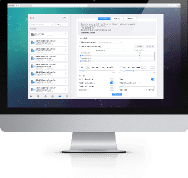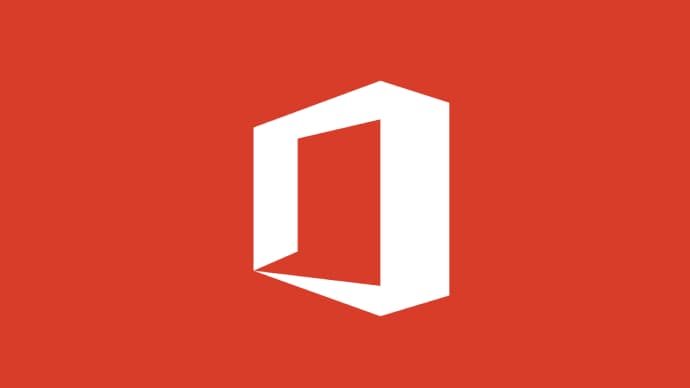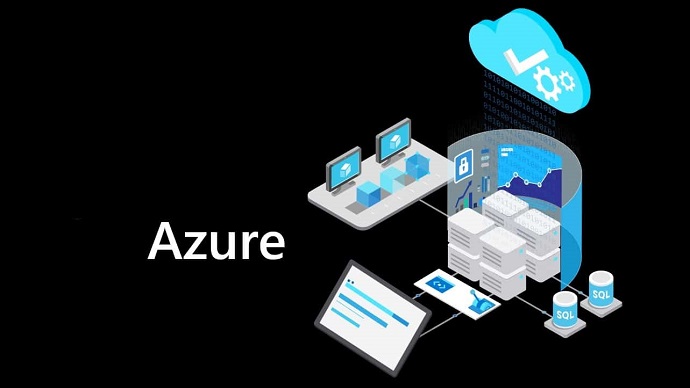Use VCE Exam Simulator to open VCE files

Financial User NetSuite Practice Test Questions and Exam Dumps
Question 1
Which three statements are true about using Parent Accounts in NetSuite? (Choose three.)
A. Checking the Summary box on the account record prevents anyone from posting activity to the account.
B. Parent accounts can be posting or non-posting.
C. Checking the Summary box allows the posting of reversing journal entries to this account.
D. Parent accounts are created by setting the "Parent of" field.
E. Child accounts are created by setting the "Subaccount of" field.
Correct Answers: B, D, E
Explanation:
In NetSuite, Parent and Child accounts are an essential part of the financial structure, and they allow businesses to organize and manage their accounting more effectively. Let's break down each of the options:
Parent accounts can be posting or non-posting.
This is true. Parent accounts in NetSuite can be designated as either posting accounts (which allow transactions to be posted to them) or non-posting accounts (which do not allow transactions to be posted directly but can aggregate data from child accounts). Non-posting parent accounts are useful for summarizing financial data without having direct journal entries.
Parent accounts are created by setting the "Parent of" field.
This is also correct. When setting up a parent account in NetSuite, you define the relationship to child accounts by using the "Parent of" field. This designates an account as a parent and helps establish the hierarchical relationship between the accounts. Parent accounts are used for grouping and summarizing financial data.
Child accounts are created by setting the "Subaccount of" field.
This statement is true as well. To create a child account in NetSuite, you assign the parent account to the "Subaccount of" field. This creates a relationship where the child account is associated with the parent account, and the child account transactions are typically rolled up into the parent account for reporting purposes.
Checking the Summary box on the account record prevents anyone from posting activity to the account.
This is incorrect. The Summary box in NetSuite indicates whether an account is a summary account, which means it aggregates data from subaccounts (child accounts) but does not directly affect the ability to post transactions. A summary account still allows for the posting of activity to its subaccounts, and checking the Summary box does not prevent posting; it changes the way data is summarized.
Checking the Summary box allows the posting of reversing journal entries to this account.
This is incorrect. The Summary box does not control the ability to post reversing journal entries. The ability to post journal entries (reversing or otherwise) depends on whether the account is set as a posting account or non-posting account. The Summary box is related to whether the account is used to summarize data from child accounts, not whether reversing journal entries can be posted.
The correct statements about Parent and Child accounts in NetSuite focus on how accounts are linked using the "Parent of" and "Subaccount of" fields, and that parent accounts can either allow or prevent posting, depending on their configuration.
Question 2
Which account feature determines in which financial report section an account appears by default?
A. Department | Class | Location classification
B. Account type
C. Account number
D. Currency
Correct Answer: B. Account type
In NetSuite, the Account type is the feature that determines where an account appears in financial reports by default. The account type defines the category of the account, such as Asset, Liability, Equity, Income, or Expense, and these categories correspond to sections in financial reports such as the Balance Sheet or Income Statement.
Option A: Department | Class | Location classification
This is used for segmentation of transactions and reporting based on departments, classes, and locations. It allows you to track transactions by specific segments but does not dictate the section of financial reports where an account will appear by default. These are used for segmented reporting, not for determining where accounts appear in standard reports like the balance sheet or income statement.
Option B: Account type
This is the correct answer. The Account type determines the classification of an account in financial reports. For example:
Asset accounts will show up on the Balance Sheet under the Assets section.
Liability accounts will show up under the Liabilities section.
Income accounts will show up on the Income Statement (Profit & Loss report) under the Revenue section.
Expense accounts will also appear on the Income Statement but under Expenses.
Option C: Account number
The Account number is a way to organize and identify accounts, but it does not determine where an account will appear in financial reports. It’s a structural tool for maintaining account organization within NetSuite.
Option D: Currency
The Currency determines the currency in which the account’s balance is recorded but does not determine in which section of financial reports the account will appear. Currency is important for multicurrency reporting, but it does not control report placement.
The Account type is the key factor that determines where an account appears by default in financial reports in NetSuite. For example, an Asset account will show on the Balance Sheet under the Assets section, and an Income account will appear under the Revenue section of the Income Statement.
Question 3
How does NetSuite set up a company record when you buy from and sell to the same company?
A. NetSuite uses a single Company record to track this combined relationship.
B. NetSuite uses unrelated Customer and Vendor records to track these.
C. Either the Vendor or the Customer can be set as "Parent of" the other record to link them.
D. NetSuite tracks this using the "Other Relationships" function to link the Customer and Vendor records.
Correct Answer: D. NetSuite tracks this using the "Other Relationships" function to link the Customer and Vendor records.
In NetSuite, when a company is both a Customer and a Vendor, you can link these two records (Customer and Vendor) through the Other Relationships feature. This allows you to maintain the separate records for purchasing (Vendor) and selling (Customer) while still recognizing that they represent the same company.
Option A: NetSuite uses a single Company record to track this combined relationship.
This is incorrect. NetSuite doesn’t combine the Customer and Vendor records into one. Instead, it keeps them as separate entities (Customer and Vendor) and links them using the Other Relationships feature. A single company record doesn't track both purchasing and sales activities in one place.
Option B: NetSuite uses unrelated Customer and Vendor records to track these.
While it is true that NetSuite uses separate Customer and Vendor records, they are related through the Other Relationships function, rather than being completely unrelated.
Option C: Either the Vendor or the Customer can be set as "Parent of" the other record to link them.
This is incorrect. The "Parent of" field is used to create parent-child relationships between records, but it does not link a Customer and Vendor record. The "Other Relationships" function is used for that purpose.
Option D: NetSuite tracks this using the "Other Relationships" function to link the Customer and Vendor records.
This is the correct answer. Other Relationships in NetSuite is the feature designed specifically to link a Customer record and a Vendor record that represent the same entity. This allows you to manage the business relationships appropriately without having to combine the records into a single entry.
When a company is both a Customer and a Vendor, NetSuite uses the Other Relationships function to link the two records (Customer and Vendor) to track both relationships while keeping them as separate records.
Question 4
Which two settings are needed for billable items to appear on the Customer Invoice? (Choose two.)
A. Billable checkbox
B. Memo
C. Invoice Number
D. Customer
Correct Answers: A. Billable checkbox, D. Customer
For billable items to appear on a customer invoice in NetSuite, the following settings must be configured:
A. Billable checkbox:
The Billable checkbox must be selected on the item or transaction to mark it as billable. This tells NetSuite that the item or service should be included in the billing process when creating the customer invoice.
D. Customer:
The Customer field is crucial because the billable items need to be associated with a specific customer. Without linking the item to a customer, there would be no context for generating the customer invoice.
B. Memo:
The Memo is optional. It is typically used to provide additional information or notes about the transaction but does not affect whether the item is billable or not.
C. Invoice Number:
The Invoice Number is generated when the invoice is created and is not a setting that determines whether items appear on the invoice. The invoice number is a unique identifier for the invoice itself but does not affect which items appear on it.
To ensure billable items appear on the customer invoice, you need to have the Billable checkbox selected for the items, and the items need to be associated with a specific Customer.
Question 5
Which two record types can be applied to a customer payment? (Choose two.)
A. Refund
B. Cash Sale
C. Customer Deposit
D. Credit Memo
Correct Answers: A. Refund, C. Customer Deposit
In NetSuite, customer payments are typically associated with specific types of records. The two record types that can be applied to a customer payment are:
A. Refund:
A Refund is a record that can be applied to a customer payment when you're returning money to the customer. It can be linked to an existing customer payment to record the refund transaction.
C. Customer Deposit:
A Customer Deposit is a payment made by a customer in advance of receiving goods or services. This deposit can be applied to a future invoice, and the payment is linked to the customer deposit record.
B. Cash Sale:
A Cash Sale is a transaction where goods or services are sold to a customer and paid for immediately, typically on the spot. However, it is not directly applied to a customer payment; instead, a customer payment may be made against the invoice that results from the cash sale.
D. Credit Memo:
A Credit Memo is issued to reduce the amount a customer owes, such as when there’s a return of goods or a billing error. It can be applied to open invoices but is not applied directly to a customer payment.
The two record types that can be applied to a customer payment are Refund and Customer Deposit.
Question 6
Which transaction transfers the Customer Deposit liability to offset the Invoice Accounts Receivable GL Impact?
A. Deposit Application
B. Credit Memo
C. Journal Entry
D. Sales Order
Correct Answer: A. Deposit Application
In NetSuite, Customer Deposits are recorded as liability transactions when a customer pays in advance for goods or services. These deposits are not initially applied to any invoice and sit on the balance sheet in a Customer Deposits liability account. When an invoice is finally generated (typically from a Sales Order fulfillment), the liability from the deposit needs to be applied to offset the Accounts Receivable (A/R), reducing the amount the customer owes.
This is done through a Deposit Application.
Let’s break it down:
A Customer Deposit is created when a customer prepays.
When an Invoice is created, the system expects a way to apply that deposit to the outstanding A/R.
The Deposit Application is the transaction type that links the Customer Deposit to the Invoice.
This application debits the Customer Deposits liability account (reducing the liability) and credits Accounts Receivable, effectively reducing the open balance on the invoice.
A. Deposit Application:
This is the correct transaction used in NetSuite to apply a Customer Deposit to an Invoice. It transfers the balance from the Customer Deposits account to reduce the Accounts Receivable on the invoice.
B. Credit Memo:
A Credit Memo reduces the amount a customer owes, often due to a return or billing error. It is not used to apply deposits.
C. Journal Entry:
Although a Journal Entry could technically be used to move balances manually, it is not the proper or recommended method in NetSuite for applying a Customer Deposit. It would bypass transactional integrity and audit trails.
D. Sales Order:
A Sales Order is a non-posting transaction that records the intention to sell. It plays a role in the order-to-cash cycle but does not affect General Ledger (GL) accounts nor apply deposits.
The correct transaction to apply a Customer Deposit to an Invoice and offset the Accounts Receivable GL impact is the Deposit Application. This ensures the liability is correctly relieved and the customer’s invoice balance is reduced.
Question 7
A Sales Order should be billed when certain key project tasks have been completed. Which type of Billing Schedule should be used?
A. Fixed Bid Milestone
B. Standard
C. Time and Material
D. Charge Based
Correct Answer: A. Fixed Bid Milestone
In NetSuite, a Billing Schedule determines how and when a customer is invoiced for items or services sold on a Sales Order. When billing needs to occur based on project milestones — such as the completion of specific tasks or phases — the most appropriate billing schedule type is Fixed Bid Milestone.
Let’s explore the available options and why Fixed Bid Milestone is the correct one:
This billing schedule type is designed for project-based billing where the total fee is fixed, and invoices are triggered upon the completion of defined milestones. For instance, if a project is billed in phases like "Requirements Complete," "Development Done," and "Go-Live," each of these can be set as a milestone. Once the milestone is marked complete, billing for that portion of the contract is initiated.
This aligns exactly with the requirement in the question: bill when certain key project tasks are completed. This makes Fixed Bid Milestone the most accurate and appropriate option.
A Standard billing schedule usually means recurring or pre-defined date-based billing (e.g., monthly, quarterly). This is suitable for subscription models or predictable payment intervals, not for milestone-based billing triggered by task completion.
This schedule type bills the customer based on actual time entries and item usage. It’s commonly used in consulting or service-based industries where billing is calculated on actual effort and expenses. While dynamic and accurate for hourly work, it’s not aligned with milestone-based billing.
Charge-Based Billing is used when you want to generate charges based on transactions or activities, such as time entries, expenses, or item fulfillment. It allows flexibility in how charges are accumulated and billed. However, while it can be used in project billing scenarios, it’s not specifically triggered by milestone completions unless configured carefully with rules and workflows.
Since the requirement is to bill when certain key project tasks are completed, the Fixed Bid Milestone billing schedule is designed exactly for this purpose. It ensures that invoices are generated only when project progress aligns with agreed milestones — offering both client and vendor a clear, contractually-aligned billing structure.
Question 8
Which statement is true about assigning a Billing Schedule to an Item record?
A. It forces all the lines on a Sales Orders to have a Billing Schedule.
B. It ensures the Item will always have the Billing Schedule default in correctly on the Sales Order.
C. It requires that all Items on the same Sales Order have a Billing Schedule of some kind.
D. It requires that all Items on the same Sales Order use the same Billing Schedule.
Correct Answer: B.
In NetSuite, assigning a Billing Schedule to an Item record acts as a default setting. This means when that item is added to a transaction such as a Sales Order, the billing schedule defined on the item record is automatically pulled into the corresponding line item — unless manually overridden on the transaction.
This behavior is designed to streamline data entry and ensure consistency in how billing is handled per item.
Let’s analyze the options:
This is incorrect. Assigning a billing schedule to an item only affects that specific item. It does not impose a requirement on other lines in the Sales Order to also have billing schedules.
This is correct. When a billing schedule is defined at the item level, it becomes the default billing behavior for that item. Upon selection of the item in a Sales Order, the system pulls in that billing schedule automatically. This reduces the likelihood of human error and enforces predefined billing logic.
This is not true. While NetSuite allows different items on a Sales Order to each have their own billing schedules (or none at all), there's no such requirement enforced by the system unless custom validations or scripting have been added.
Again, incorrect. NetSuite supports line-level billing schedules, meaning that different items on the same Sales Order can each have different billing schedules. This is particularly useful in scenarios where one line is billed immediately and another is billed on milestones or time-and-material basis.
Assigning a billing schedule to an item ensures that it will default correctly into Sales Orders when the item is selected, supporting consistency and efficiency in billing operations. However, it does not enforce uniform billing schedules across the order, nor does it mandate that all lines must include a billing schedule.
Question 9
Which two statements are true about vendors and multi-currency? (Choose two.)
A. The currency on the purchase order can be changed at the point when the purchase order is billed.
B. Currencies must be added to the Vendor before being used on a transaction.
C. The primary currency is used for the credit limit.
D. To remove a currency from a vendor you must first close any open transactions in that currency.
E. Vendors can have up to five currencies.
Correct Answers: B and D
NetSuite's multi-currency vendor functionality allows companies to transact with the same vendor in multiple currencies, which is especially useful for global businesses. However, this flexibility comes with certain configuration and transaction rules that ensure the integrity of financial records.
Let’s examine the provided statements to understand which are correct:
Correct.
Before you can create a transaction (e.g., purchase order, bill, or payment) in a foreign currency for a vendor, that currency must be explicitly added to the vendor record. This is managed in the vendor record’s “Currencies” sublist once Multi-Currency Vendors is enabled in NetSuite.
Without adding the currency to the vendor profile, you won’t be able to select it during transaction entry. This ensures that only approved currencies are used for each vendor, maintaining control and accuracy in reporting and exchange rate application.
Correct.
NetSuite does not allow you to remove a currency from a vendor record if there are any open or pending transactions in that currency. This includes unbilled purchase orders, unpaid bills, or any other open balance in that currency. All transactions must be completed, closed, or deleted before the currency can be safely removed from the vendor’s profile.
This prevents financial discrepancies and ensures historical integrity in reporting.
Incorrect.
The currency on a purchase order is locked at the time of creation based on the vendor’s currency setup. You cannot change the currency later at the billing (vendor bill) stage. If the currency is incorrect, the correct process would be to cancel or delete the PO and create a new one with the correct currency (assuming the vendor supports multiple currencies).
Incorrect.
While the primary currency serves as the base or default currency for reporting, credit limits are not necessarily based solely on it. Credit limits in NetSuite are generally not enforced per currency, and this statement is misleading as the credit management for vendors doesn’t operate the same way as it does for customers.
Incorrect.
There is no fixed upper limit of five currencies per vendor in NetSuite. You can assign as many currencies as needed, depending on your business requirements and the vendor’s payment terms. This limit does not exist unless custom scripting or governance policies are enforced within your NetSuite environment.
To summarize, in a multi-currency setup:
You must add currencies to a vendor before using them in transactions.
You cannot remove a currency unless all open transactions in that currency are closed.
Currency selection is fixed at PO creation and does not change at billing.
The idea of a five-currency limit is false.

Top Training Courses











SPECIAL OFFER: GET 10% OFF
This is ONE TIME OFFER

A confirmation link will be sent to this email address to verify your login. *We value your privacy. We will not rent or sell your email address.
Download Free Demo of VCE Exam Simulator
Experience Avanset VCE Exam Simulator for yourself.
Simply submit your e-mail address below to get started with our interactive software demo of your free trial.